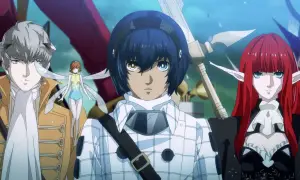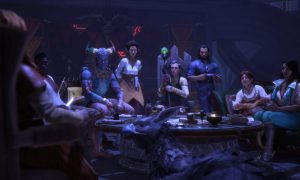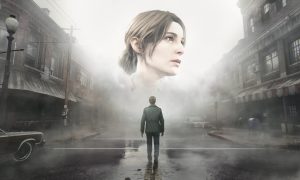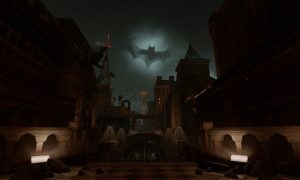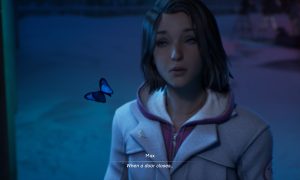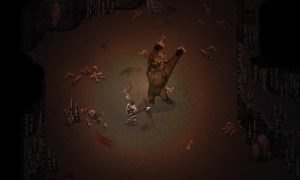
The Tales series has been around for over fifteen years and has spawned over twenty-five games, although not all of these have come westward. The latest, Tales of Graces f, is the twelfth in the series from Namco Bandai. Tales of Graces f (or ToGf) is an updated version of Tales of Graces which was released only on the Wii in Japan. Luckily for western fans of Japanese RPGs (and especially the Tales series), Namco Bandai decided to bring the title over on the Playstation 3 after they updated it in Japan. The ‘f’ in the game’s title indicates ‘future,’ which leads to the main addition to the game — a ten-hour prologue to the game which answers a number of questions that the main storyline didn’t answer. Also, the developers have added new story scenes, secrets, costumes as well as an overall upgrade to high-definition graphics.
ToGf is set in the world of Elphinia, where there are giant crystal structures called valkines cryas. These are made of an element called eleth which is ultimately the cause of a power struggle which will shake the world. The hero of the story is Asbel Lhant, the eldest son of a Windorian noble. The first part of the game is a prequel which features a number of the game’s characters as adolescents approximately ten to eleven years old. As with many children, Asbel’s parents only want to protect him. Asbel, though, is a little snot (as mentioned in the title) and both gets into (and causes) quite a bit of trouble because he believes he’s able to take care of himself. Of course, without his headstrong attitude, the story wouldn’t have progressed through meeting an amnesiac girl (Sophie) or the prince of the kingdom (Richard). Other characters feature his childhood friend who suffers from a weak constitution (Cheria) and his shy, withdrawn brother (Hubert). The prologue consists of the characters meeting and their relationship, although it ends on a very tragic note.
 After the prologue finishes, the main game begins, taking place seven years later as Asbel struggles to become strong enough to protect everyone in his life, even though not everyone has stayed the way he remembers. This quest leads through the main storyline, which averages out at about thirty to forty hours with the epilogue adding another ten to that. Of course, there are things to find in the world and side-quests which can add to that total.
After the prologue finishes, the main game begins, taking place seven years later as Asbel struggles to become strong enough to protect everyone in his life, even though not everyone has stayed the way he remembers. This quest leads through the main storyline, which averages out at about thirty to forty hours with the epilogue adding another ten to that. Of course, there are things to find in the world and side-quests which can add to that total.
As with any RPG, the combat can make or break the game, and while the combat in ToGf has its flaws, it’s definitely a solid system. Using the Linear Motion Battle System which is a trademark of the Tales series, battles take place after you contact an enemy (other than boss fights, of course) in real-time. You can pause the battle at any time to cause any of the characters to use items or you can even switch who you are controlling. Also, unlike many other RPGs, you can play with up to four players in combat. The game does suffer from number inflation as even as a child you have over a thousand hit points and sometimes the limitations of the battle field can cause issues with escaping from certain enemies. Overall though, the combat is fast and a heck of a lot of fun.
One major change from previous Tales game is that ToGf does away with Technique Points (TP), replacing them with Chain Capacity (CC). This does about what you’d expect, determining the number of attacks you can chain together at any given time. Each Arte (or ability) that you have uses a certain number of CC, and the better your weapons, the more CC you have available to you. Through battles you will earn both titles and SP. Titles can be earned by going through cutscenes or by a number of battle-related qualifiers, and each title allows you to improve your stats and learn new Artes. Also, each title has a special boost which is only in use while you have the title equipped. The SP you earn in battle (and elsewhere) are used to level up the equipped title from level 1 to 5 and then to Mastery (which gives a boost overall).
 There’s more to combat, of course, including the Eleth Meter, Eleth Mixer, Mystic Artes and a number of other features that the game very helpfully teaches you about as you play. In fact, one thing that definitely cannot be said about ToGf is that it’s lacking in information. The game has a very solid tutorial system and in-game help guide as well as manuals that you can find or purchase which keep track of the monsters you face, the receipes you learn how to cook, the items you Dualize, the items you find, and stats on the game itself including the number of collections….collected.
There’s more to combat, of course, including the Eleth Meter, Eleth Mixer, Mystic Artes and a number of other features that the game very helpfully teaches you about as you play. In fact, one thing that definitely cannot be said about ToGf is that it’s lacking in information. The game has a very solid tutorial system and in-game help guide as well as manuals that you can find or purchase which keep track of the monsters you face, the receipes you learn how to cook, the items you Dualize, the items you find, and stats on the game itself including the number of collections….collected.
The voice acting in the game is actually fairly solid for the most part, if it doesn’t always sync up with the mouth-movements on-screen, although that’s more of a minor note than anything else. The opening song is in English and sung by Korean pop star BoA. It’s a solid song, although the translation to English (and the slight key change) doesn’t really work well for me. Overall though, the vocals and sound in the game (by Tales signature composer Motoi Sakuraba — see Dark Souls, the Star Ocean series and Valkyrie Profile for his other works) ranges from above average to quite good. The game features a number of fully-voiced skits as well as a large amount of voice acting both during and after battles.
The translation in the game is very good in what few cases I was able to compare to the Japanese, although some of the post-battle statements don’t seem to work as well in English in my opinion. Again, though, this is more of a slight nit-pick as opposed to a serious issue with the game. The writing overall is very good and there are some definite moments of sheer humor in the game to keep things from getting too serious (although those moments are here too).
 Graphically, the game is very beautiful with the update to high-resolution graphics. The only issue I had with the game is that the camera is in a fixed position, which means that sometimes the scenery gets between you and your party and can make it fairly difficult to see what is where. The game features some very well-done animation sequences by Production I.G. (Kill Bill, the upcoming Mass Effect anime, Halo Legends and Xenogears) and the 3D character images are also very nice. Admittedly, with this being a JRPG, there’s a very definite anime influence on the characters and expressions which may not be as obvious to players who aren’t also fans of anime.
Graphically, the game is very beautiful with the update to high-resolution graphics. The only issue I had with the game is that the camera is in a fixed position, which means that sometimes the scenery gets between you and your party and can make it fairly difficult to see what is where. The game features some very well-done animation sequences by Production I.G. (Kill Bill, the upcoming Mass Effect anime, Halo Legends and Xenogears) and the 3D character images are also very nice. Admittedly, with this being a JRPG, there’s a very definite anime influence on the characters and expressions which may not be as obvious to players who aren’t also fans of anime.
ToGf also features multiple difficulty levels and the ability to play through the game more than once. The game begins with four difficulty levels unlocked (Easy, Normal, Moderate and Hard) with two more (Evil and Chaos) which are unlocked through game play. When the game says Evil, it means it, though. One of the early to mid-game boss fights tended to last about ten to fifteen seconds on Evil difficulty, and I was unable to pass it until I dropped it down a notch. Luckily, though, the only trophy that this affects is on the final boss, so you could realistically leave the game on Easy and then change it for the final boss to get that trophy.
Overall, ToGf is a fun RPG with an absolute ton of things to do through the game. It has a variety of trophies (most of which are hidden), side-quests, cooking, Dualizing, collecting and tons of titles to power up means that you could spend much more than the game’s suggested length playing. Namco Bandai is also doing a solid job of releasing DLC on the Playstation Network (including some decent free items) to add to the game’s visual content if nothing else.
I've been a computer gamer since the mid 90s and have been a writer at Gaming Trend since late 2004. My primary interests are RPGs and turn-based strategy, and Japanese imports.

See below for our list of partners and affiliates:









